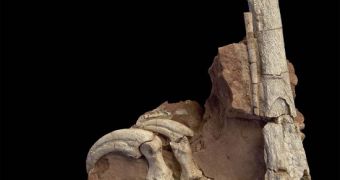A team of investigators announces the discovery of a new species of dinosaurs that they say is closely related to the renowned predator Velociraptor.
The animal appears to have roamed the European continent during the Late Cretaceous period. This epoch ended with the K-T extinction event (the K-T boundary), which took place some 65 million years ago, and which saw all dinosaurs killed off.
The new relative of the Velociraptor was a creature that most likely preyed upon smaller beasts, that also inhabited Europe at the time, paleontologists report.
One of the most interesting aspects of the Balaur bondoc (stocky dragon) species is that the theropod appeared to have similar dimensions throughout the continent, regardless of the fact that its various populations lived on islands, separated from each other.
Generally, when this happens, variations in size, body mass and other physical traits are inevitable. But this appears not to have happened in the case of Balaur bondoc.
The discovery was made by experts at the University of Bucharest, in Romania and the American Museum of Natural History (AMNH).
The findings are presented as the cover story on the August 31 issue of the esteemed journal Proceedings of the National Academy of Sciences (PNAS).
“While we would expect that there were carnivorous animals in these faunas, finding one as unusual as Balaur is thrilling and is testament to the unusual animals found on islands today and in the past,” explains AMNH paleontologist Mark Norell.
He was also a coauthor of the journal entry. The researcher explains that the animal featured two large claws on its hind legs, which hinted at the fact that it could easily subdue its prey.
“Although Balaur is so extremely divergent morphologically, it is closely related to animals like Velociraptor and the feathered dinosaurs in China,” explains University of Bucharest paleontologist Zoltan Csiki, the lead author of the new study.
“The finding indicates that this area of the world, despite its archipelago geography, had at least intermittent faunal connections with the mainland up to the end of the Cretaceous. This connection was not really acknowledged until very recently,” Csiki adds.
The new work was sponsored by the American Museum of Natural History, the US National Science Foundation (NSF), and the Columbia University Department of Earth and Environmental Sciences.
Further support came from the the Romanian National University Research Council, and Richard and Lynn Jaffe.

 14 DAY TRIAL //
14 DAY TRIAL //